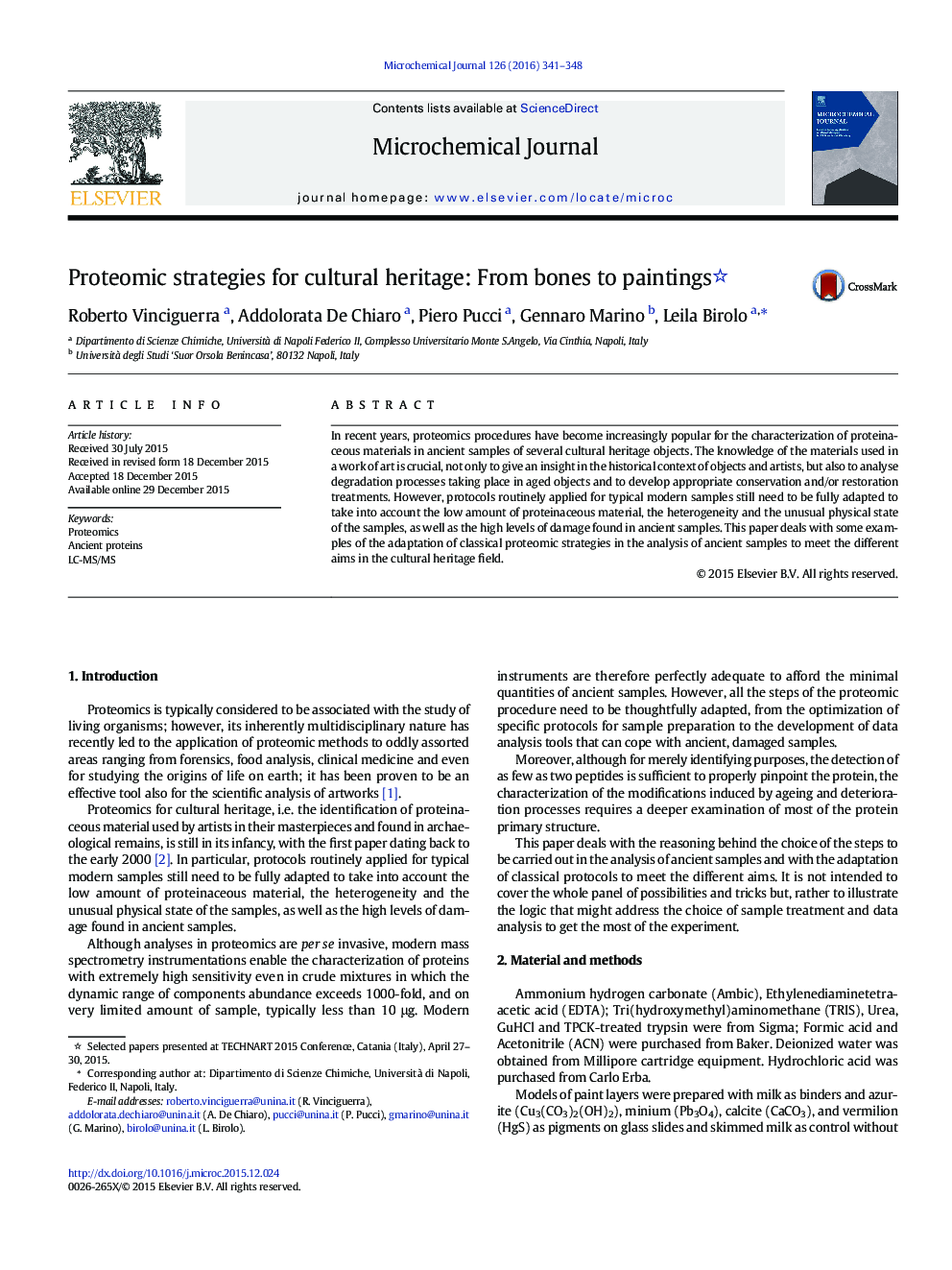| Article ID | Journal | Published Year | Pages | File Type |
|---|---|---|---|---|
| 7641638 | Microchemical Journal | 2016 | 8 Pages |
Abstract
In recent years, proteomics procedures have become increasingly popular for the characterization of proteinaceous materials in ancient samples of several cultural heritage objects. The knowledge of the materials used in a work of art is crucial, not only to give an insight in the historical context of objects and artists, but also to analyse degradation processes taking place in aged objects and to develop appropriate conservation and/or restoration treatments. However, protocols routinely applied for typical modern samples still need to be fully adapted to take into account the low amount of proteinaceous material, the heterogeneity and the unusual physical state of the samples, as well as the high levels of damage found in ancient samples. This paper deals with some examples of the adaptation of classical proteomic strategies in the analysis of ancient samples to meet the different aims in the cultural heritage field.
Keywords
Related Topics
Physical Sciences and Engineering
Chemistry
Analytical Chemistry
Authors
Roberto Vinciguerra, Addolorata De Chiaro, Piero Pucci, Gennaro Marino, Leila Birolo,
